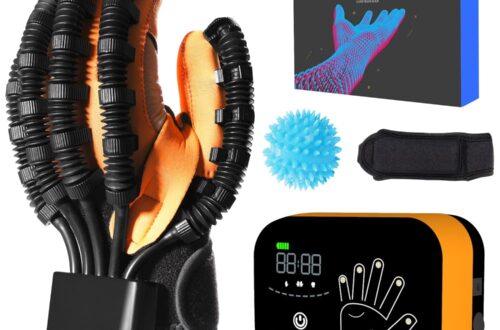Introduction
Occupational therapy plays a crucial role in the rehabilitation process for stroke survivors. It focuses on improving the ability to perform everyday tasks and activities. This process often involves the use of specialized occupational therapy devices designed to help patients regain independence and improve their quality of life.
Key Occupational Therapy Devices
- Adaptive Utensils and Eating Aids: These include weighted or easy-grip utensils, non-slip mats, and angled or bendable utensils, helping those with limited hand strength or coordination to eat independently.
- Dressing Aids: Items such as button hooks, zipper pulls, elastic shoelaces, and long-handled shoe horns assist those who struggle with fine motor skills and dressing.
- Reaching and Grabbing Tools: Extended reachers or grabbers allow patients to pick up objects without bending or stretching, reducing the risk of falls.
- Modified Writing Instruments: Pen or pencil grips, weighted pens, and angled writing boards help individuals with reduced hand strength or dexterity to write.
- Bathing and Hygiene Aids: This includes long-handled sponges, shower chairs, and non-slip bath mats, enabling safer and more independent personal care.
- Hand and Finger Exercisers: Devices such as therapy putty, hand exercisers, and finger separators help in regaining strength and dexterity in the hands and fingers.
- Cognitive Rehabilitation Tools: Puzzle games, memory exercises, and digital applications are used to improve cognitive functions like memory, attention, and problem-solving skills.
- Wheelchair Accessories: Cushions for pressure relief, lap trays for eating or writing, and wheelchair bags for carrying personal items.
- Environmental Control Devices: Voice-activated systems, adapted switches, and other smart home technologies assist in controlling the environment for those with limited mobility.
- Communication Aids: For those with aphasia or other communication challenges, tools like communication boards or speech-generating devices are used.
Benefits of Occupational Therapy Devices
- Enhanced Independence: These devices enable stroke survivors to perform daily tasks by themselves, fostering a sense of autonomy.
- Safety and Injury Prevention: Aids like non-slip mats and reachers prevent accidents during daily activities.
- Improved Quality of Life: Being able to engage in everyday activities boosts morale and mental health.
- Customized Rehabilitation: Devices can be tailored to individual needs and progress levels.
Conclusion
Occupational therapy devices are indispensable in the journey of stroke recovery. They not only facilitate physical rehabilitation but also address cognitive and emotional challenges. By integrating these tools into the recovery process, occupational therapists can significantly improve the outcomes for stroke survivors, leading to a more independent and fulfilling life.


